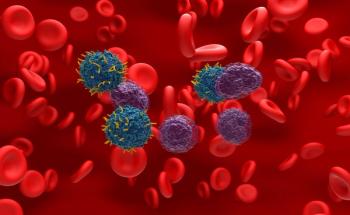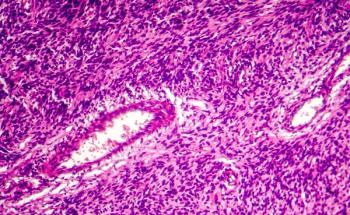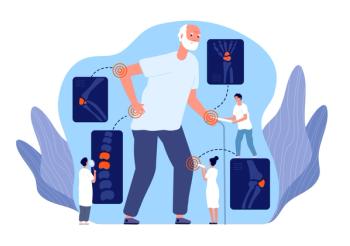
Differentially Expressed Genes May Serve as IPF Biomarkers
Key Takeaways
- Cellular senescence contributes to IPF progression by promoting inflammation and disrupting immune homeostasis.
- Four key genes—CDKN2A, VEGFA, SOX2, and FOXO3—were identified as differentially expressed in IPF.
The genes are all associated with cellular senescence, which is believed to play an important role in the development of idiopathic pulmonary fibrosis (IPF).
A set of genes associated with cellular senescence could help scientists better understand the pathogenesis of
While recent research has expanded the scientific community’s understanding of IPF, existing therapies can only slow—not reverse—the disease’s progression, and lung transplantation remains the only cure.
“Therefore, identifying novel biomarkers and therapeutic targets is crucial to improve diagnosis and treatment outcomes in IPF,” the authors wrote.
Cellular senescence—irreversible cell-cycle arrest—plays a key role in a number of age-related diseases and in aging itself. However, the investigators explained, it also appears to have an impact on the development of IPF.
“In IPF,
Senescent cells also secrete pro-fibrotic factors known collectively as the senescence-associated secretory phenotype.1 However, they said it is not yet clear which specific cellular senescence-related genes are involved in IPF.
The investigators conducted bioinformatics analysis on a publicly available gene expression dataset with a goal of identifying differentially expressed genes related to cellular senescence. Their analysis included gene set enrichment analysis, protein-protein interaction network analysis, and functional enrichment analysis. They then used 2 independent datasets and immunofluorescence staining on lung tissue samples from patients with IPF and normal controls to validate their findings.
The authors found a total of 122 differentially expressed genes in IPF. Functional analysis helped the team narrow the number down, and they eventually emerged with a set of 4 key differentially expressed genes associated with cellular senescence. They are: CDKN2A, VEGFA, SOX2, and FOXO3. They found that lung tissue samples from patients with IPF had higher expression of CDKN2A and SOX2, but lower expression of FOXO3 and VEGFA compared with samples from healthy controls.
The model suggested that the combination of the 4 genes offered the best indicator of disease. CDKN2A seemed to have the strongest association with the disease of any of the 4 genes, while SOX2 had weak diagnostic power as a single marker.
“These findings imply that a composite multi-gene model is more suitable for capturing disease heterogeneity and enhancing diagnostic accuracy in IPF,” the authors wrote.
They cautioned, however, that further clinical studies will be needed to validate the utility of the genes as disease biomarkers. They noted that the datasets used in their analysis did not include detailed clinical information, so it was not possible to map these biomarkers onto factors such as disease severity or pulmonary function. Those variables could be confounding factors, they said.
Additionally, the authors reiterated that their analysis was focused on identifying differentially expressed gene signatures with diagnostic potential in IPF. As such, they said more work will be needed to better establish their mechanistic role within the disease. Such analysis could help investigators better understand the potential utility of the biomarkers as therapeutic targets.
“Our findings provide a foundation for future research focused on developing senescence-based interventions, which could improve clinical outcomes for IPF patients,” the authors concluded.
References
1. Li J, Wang X, Zhang Y, et al. Cellular senescence-related gene signatures in idiopathic pulmonary fibrosis: insights from bioinformatics. Front Immunol. 2025;16. doi:10.3389/fimmu.2025.1557848
2. Moss BJ, Ryter SW, Rosas IO. Pathogenic mechanisms underlying idiopathic pulmonary fibrosis. Annu Rev Pathol. 2022;17:515-546. doi:10.1146/annurev-pathol-042320-030240
Newsletter
Stay ahead of policy, cost, and value—subscribe to AJMC for expert insights at the intersection of clinical care and health economics.














































